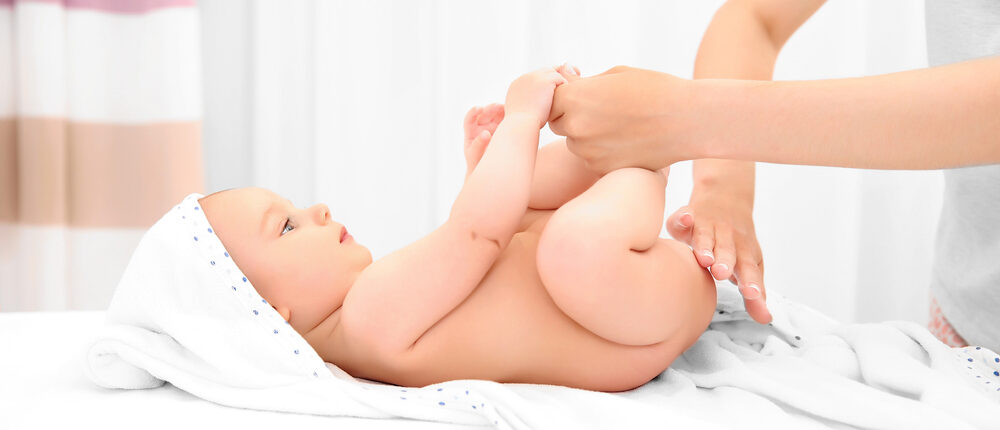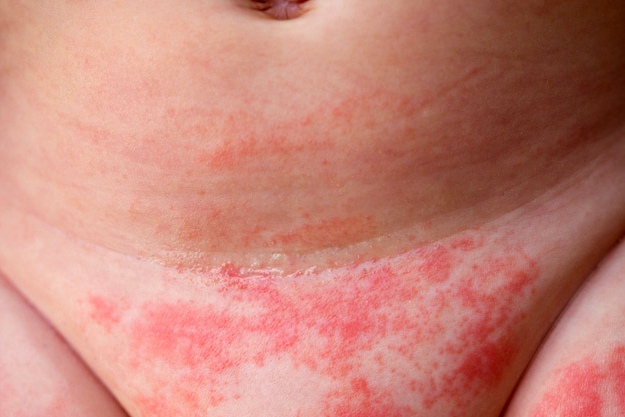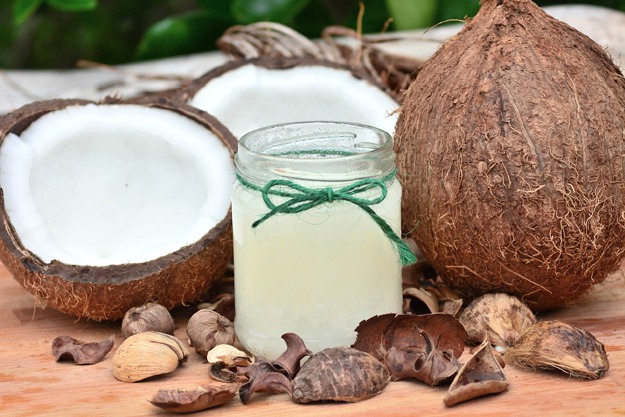

There are different types of a diaper rash, and parents need to learn to distinguish them, particularly a yeast diaper rash. Read this article to learn more about it and why it’s more than a skin irritation.
Yeast Diaper Rash Infection | How to Spot and Treat It
In This Article:
- What Is a Diaper Rash?
- What Is a Yeast Diaper Rash?
- Symptoms of a Yeast Diaper Rash
- What Is the Treatment for Yeast Diaper Rash?
- Are There Home Remedies for Yeast Infections?
- When Does the Baby Need to See a Doctor?
-
-
What Is a Diaper Rash?
When is the redness not considered a yeast diaper rash? A diaper rash is an umbrella term for diaper dermatitis. It refers to the redness and inflammation of the skin. It’s a problem most parents see at least once. Anytime there are skin changes in the diaper area, it’s classified as a diaper rash.
There are many possible causes for it, but it all boils down to having a sensitive skin. Some of the most common reasons for a skin rash are:
- Excessive bowel movement leading to a lot of wiping of the bum area
- Prolonged exposure or wearing of a dirty diaper
- Chafing
- Allergic reaction to disposable diapers
A diaper rash may also fall into the following categories:
- Irritant diaper rash
- Ammonia diaper rash
- Diarrhea diaper rash
- Yeast diaper rash
- Bacterial diaper rash
- Cellulitis
- Staph scalded skin syndrome
All these problems need immediate attention depending on the severity, but four of them are potentially serious since they’re related to infection:
- Yeast diaper rash
- Bacterial diaper rash
- Cellulitis
- Staph scalded skin syndrome
What Is a Yeast Diaper Rash?

A yeast diaper rash is one of the common types of fungal infections. It’s due to a fungus called candida albicans. It’s the same species of yeast adults get, especially women who are prone to vaginal yeast infection. A yeast infection in a baby or toddler will affect either boys or girls, though.
Candida, like most fungi, likes to grow in warm, moist places. This explains why the inflammation appears on the skin folds around the genital area. It may also spread due to the following:
- Acidic stool and stool
- Wearing of nonabsorbent or cloth diapers that trap moisture
- Intake of oral antibiotics since it disturbs the gut flora and can lead to the overgrowth of Candida
The fungus needs the right environment to grow and multiply. However, it’s possible for a regular diaper rash to worsen into a yeast diaper rash. Furthermore, some believe an oral thrush is a risk factor for a yeast diaper rash.
Symptoms of a Yeast Diaper Rash
A yeast diaper rash will look very similar to the regular one at first glance. As time goes on, however, other symptoms may appear:
- Scaly regions around the genitals
- Blisters or sores
- Pus
- Red patches that blend with additional dry spots (called satellite lesions)
- Red bumps in the skin creases
- Itchy rash
A yeast diaper rash won’t respond to the typical diaper rash treatments either, such as a diaper cream. They also tend to spread to other parts of the body like the thighs.
What Is the Treatment for Yeast Diaper Rash?
Treatment for a yeast diaper rash requires not only eliminating the infection but also correcting problems leading to it. It may take a little trial and error, though, to find the right care plan for your baby.
Treatment will likely start with a topical anti-fungal cream. These are available over the counter and contain ingredients like:
- Nystatin
- Clotrimazole
- Miconazole
For more severe infections, the pediatrician may prescribe anti-fungal or even an oral medication like fluconazole.
The second part of an effective treatment plan is prevention. Most yeast infections start as diaper rash, so look for ways to avoid them.
The obvious choice is to change the baby’s diaper more often. An older baby can start potty training early, too, if they’re prone to skin irritations. Barrier creams are effective if increasing diaper changes aren’t helping. These products contain zinc oxide or petroleum jelly to create a shield over the skin to keep it safe. Apply the creams after cleaning the diaper area between changes and immediately after bathing to reduce moisture.
Other tips to prevent a yeast diaper rash include:
- Make sure to wash your hands thoroughly before and after diaper changes to prevent the spreading of infection.
- Avoid using harsh laundry detergent, fabric softeners, or dryer sheets on cloth diapers.
- Choose baby wipes that are free of alcohol or perfumes to prevent allergic problems and irritation. You can also try these natural remedies for allergies.
- Leave the diaper off when possible to give the bottom air.
Are There Home Remedies for Yeast Infections?

There’s some evidence that suggests coconut oil can help reduce the irritation that comes with diaper rash. It can also serve as a skin barrier to protect open areas from the yeast. Coconut oil is considered safe for topical use on babies and won’t expose them to the chemicals found in over-the-counter products.
To apply coconut oil:
- Clean the baby’s skin thoroughly and pat dry.
- Apply around 1 teaspoon of the oil to the baby’s bottom and the affected area.
- Apply the oil only two or three times a day or just after bathing.
Some products contain natural including coconut oil for even better healing.
When Does the Baby Need to See a Doctor?
A yeast diaper rash is potentially serious. So if you’re not having any luck clearing it up, it’s time to see the pediatrician. For complex cases, you might even need a referral to a dermatologist. Warning signs that indicate a more involved infection include:
- Fever
- Open areas
- Bleeding
- Pus
- Signs of drainage on diaper
- Swelling
- Blisters
If the baby just seems really uncomfortable or sick, go to the doctor for help.
How do you clean the baby after a diaper change? Watch this video from Howcast:
About half of the babies will experience a diaper rash, and among those who will have it, 50% can be a yeast diaper rash. Given those numbers, yeast infections are common. As a parent, though, you don’t need to worry as they’re treatable as long as you pay more attention.
Has your baby experienced a yeast diaper rash? What treatments did you do? Share your stories below!
Up Next: Best Natural Antifungal Remedies For Skin Fungus
